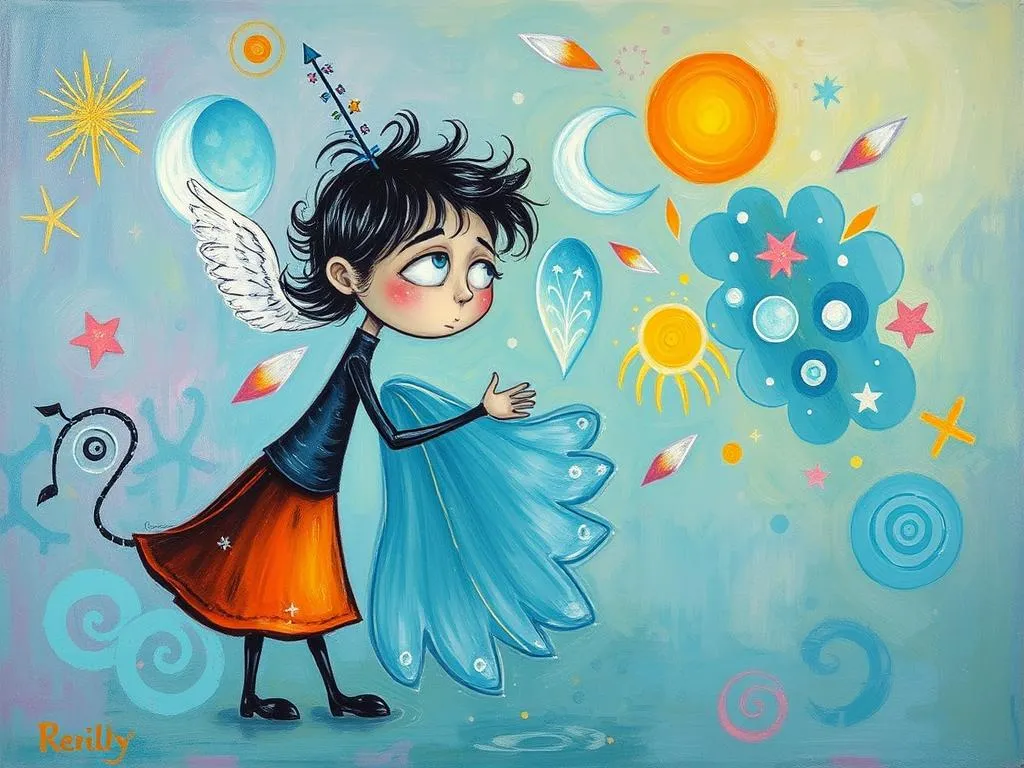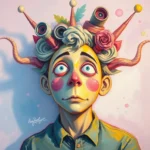
Introduction
Dreams have long fascinated humanity, serving as a gateway to our subconscious. They are mysterious narratives woven from our thoughts, fears, desires, and experiences, often leaving us perplexed upon waking. The allure of dreams lies in their inherent enigmatic quality, where a single image can resonate with multiple interpretations. This complexity is what makes dream symbolism so intriguing; it opens a dialogue between our waking life and the hidden layers of our psyche. By exploring the meanings behind various dream symbols, we can gain insight into our emotional landscape and navigate our life’s path with greater awareness.
Symbolism and Meaning
In the realm of dreams, symbols act as the language of the subconscious. Each symbol can be interpreted in myriad ways, influenced by personal experiences and cultural backgrounds. Consider, for example, the symbol of water. This potent element often represents the emotional state of the dreamer. Calm waters may symbolize tranquility and peace, while turbulent waters can reflect emotional turmoil or anxiety.
Another prevalent symbol is flight. Dreams of flying can evoke a feeling of freedom and liberation, suggesting an escape from constraints. However, if one dreams of falling during flight, it may indicate feelings of insecurity or a fear of failure. The duality of such symbols illustrates how context and personal feelings can significantly alter their meanings.
Exploring animals in dreams unveils further layers of symbolism. For instance, dreaming of a snake can evoke fear or treachery, rooted in cultural beliefs about snakes as symbols of danger. Conversely, in some traditions, snakes represent transformation and healing. Thus, the emotional response elicited by the snake in the dream can guide its interpretation.
Keys are another compelling symbol in dreams. They often signify solutions, secrets, or new opportunities. If one dreams of losing a key, it may reflect feelings of being blocked or hindered in some area of life. Gaining a key, on the other hand, can symbolize discovering new insights or potentials within oneself.
Ultimately, the meaning of these symbols is not fixed; they are shaped by the dreamer’s individual context. When analyzing dream symbols, it is crucial to engage in self-reflection, asking questions such as: What emotions did I feel during the dream? What events or thoughts may have influenced this dream? This introspective approach can lead to more personalized and relevant interpretations.
Key Scenarios and Variations
Dream scenarios can vary widely, influencing the symbolism and interpretation of the dream. For instance, a dream about being chased can evoke feelings of fear or anxiety. The pursuer might symbolize an aspect of the dreamer’s life that they are avoiding, such as unresolved conflicts or hidden emotions. In contrast, if the dreamer turns to confront the pursuer, it may signify a courage to face fears and take control of a challenging situation.
Another scenario involves losing something valuable in a dream. This could manifest as losing a wallet, a beloved item, or even a person. The loss may reflect anxiety about losing control or fear of losing one’s identity. In a different light, it might symbolize the need to let go of material possessions or old beliefs that no longer serve the dreamer.
Dreams of being unprepared for an important event, such as an exam or a public performance, can reveal feelings of inadequacy or self-doubt. The inherent fear of failing to meet expectations underscores a common human experience: the pressure to succeed. Conversely, if the dream leads to an unexpected triumph despite the initial anxiety, it may symbolize resilience and the ability to overcome perceived limitations.
Dreams involving relationships can also take various forms. For example, dreaming of a former lover may evoke nostalgia or unresolved feelings. Alternatively, it could symbolize the need to integrate lessons learned from that relationship into current life scenarios. The emotions tied to the relationship in the dream can provide valuable insights into the dreamer’s current emotional state or relationship dynamics.
Each dream scenario contributes to a broader narrative that reflects the dreamer’s internal world. By considering the context and emotional undertones, one can unravel the intricate tapestry of meanings that dreams offer.
Real-Life Connections and Takeaways
Understanding dream symbols can offer profound insights into our waking lives. By connecting dreams to real-life scenarios, we can identify patterns and address underlying issues that may be influencing our behavior and emotions. For instance, if recurring dreams of being chased arise during a stressful period at work, it could indicate an unresolved conflict or the need to confront a challenging situation. Recognizing this connection empowers the dreamer to take proactive steps, whether through open communication or self-care practices.
Furthermore, dreams can serve as a catalyst for self-reflection. Keeping a dream journal can be an effective tool for tracking recurring themes or symbols. Writing down dreams immediately upon waking preserves details that might otherwise fade. Over time, patterns may emerge that reveal fears, desires, or unresolved conflicts. This practice encourages a deeper understanding of one’s emotional landscape and can inspire personal growth.
Engaging in mindfulness practices can also enhance dream interpretation. Techniques such as meditation or visualization can help quiet the mind, allowing for greater clarity when exploring dream symbols. By creating a calm mental space, dreamers may uncover deeper meanings and insights that resonate with their current life situations.
Lastly, it is essential to approach dreams with an open mind and a sense of curiosity. Rather than seeking definitive answers, embrace the exploration of meanings. Ask yourself what resonates with you personally and how the symbols interplay with your life experiences. This reflective approach not only enriches your understanding of dreams but also fosters a deeper connection to your inner self.
As you explore your dreams, remember that they are uniquely yours. Each dream offers a glimpse into your subconscious, encouraging you to reflect, learn, and grow. By unraveling the secrets behind dream symbols, you embark on a journey of self-discovery, where every picture holds endless meanings waiting to be uncovered.
In conclusion, dream symbolism is a vast and intricate field, rich with insights and personal significance. Embrace the mystery of dreams, and allow them to illuminate your waking life. Whether through exploring common symbols, analyzing scenarios, or reflecting on personal experiences, the journey of understanding dreams is a rewarding endeavor—one that invites you to engage with the profound depths of your own consciousness.







